I recently bought an old confit pot at the Paris flea market. A confit pot is a French version of a fat jar. I had wanted a confit pot for years. My desire stemmed from the Van Gogh series of sunflower paintings. Something about the simplicity of the two objects he painted really appealed to me. Everyday sunflowers, which probably grew without anyone planting them, were plucked and placed by Vincent in an impromptu vase of a confit jar that was probably laying around in the asylum kitchen. Somehow he was so inspired by these two elements full of Simplicity and Sunshine that he created an entire series of paintings.
Simplicity and Sunshine
As many of you know, once a month I pack up my paints and take my love of color and design on the road via art instruction for children. My most recent project was a huge hit. I somehow got 26 third graders excited about still life. (snicker) The subject was an interpretation of Van Gogh’s “Sunflowers”.
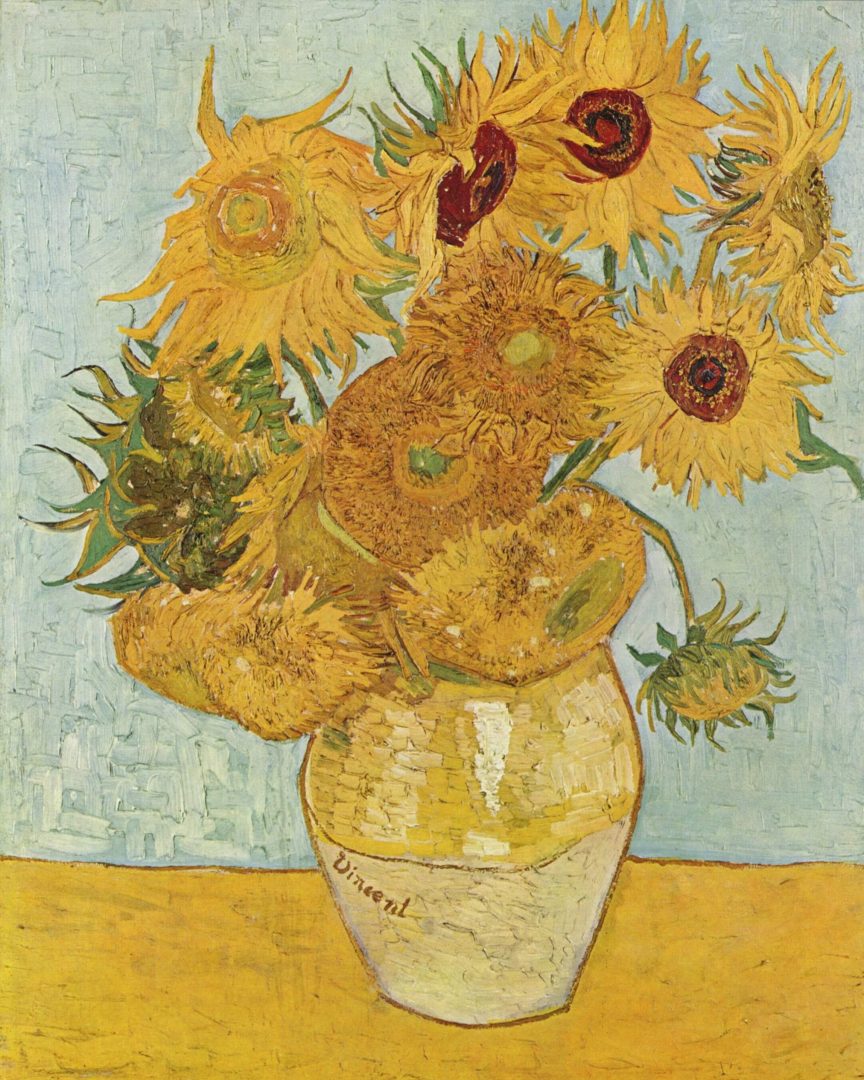
As with all art instruction I began with a short lesson. For this lesson, I explained what a still life is: A painting or photograph of nonmoving or nonliving (inanimate) objects such as fruit, flowers, or books often placed in a homelike setting such as a table in a kitchen. I then provided a brief description of Van Gogh’s life.
I would like to point out that I am not a teacher. While I do hold a degree in art history I am not a working artist. but do not consider myself an artist. I am merely a mom who wants art in school and have resorted to fulfilling that desire myself. Please forgive the quality of the video.
Teaching 3rd Graders About Van Gogh
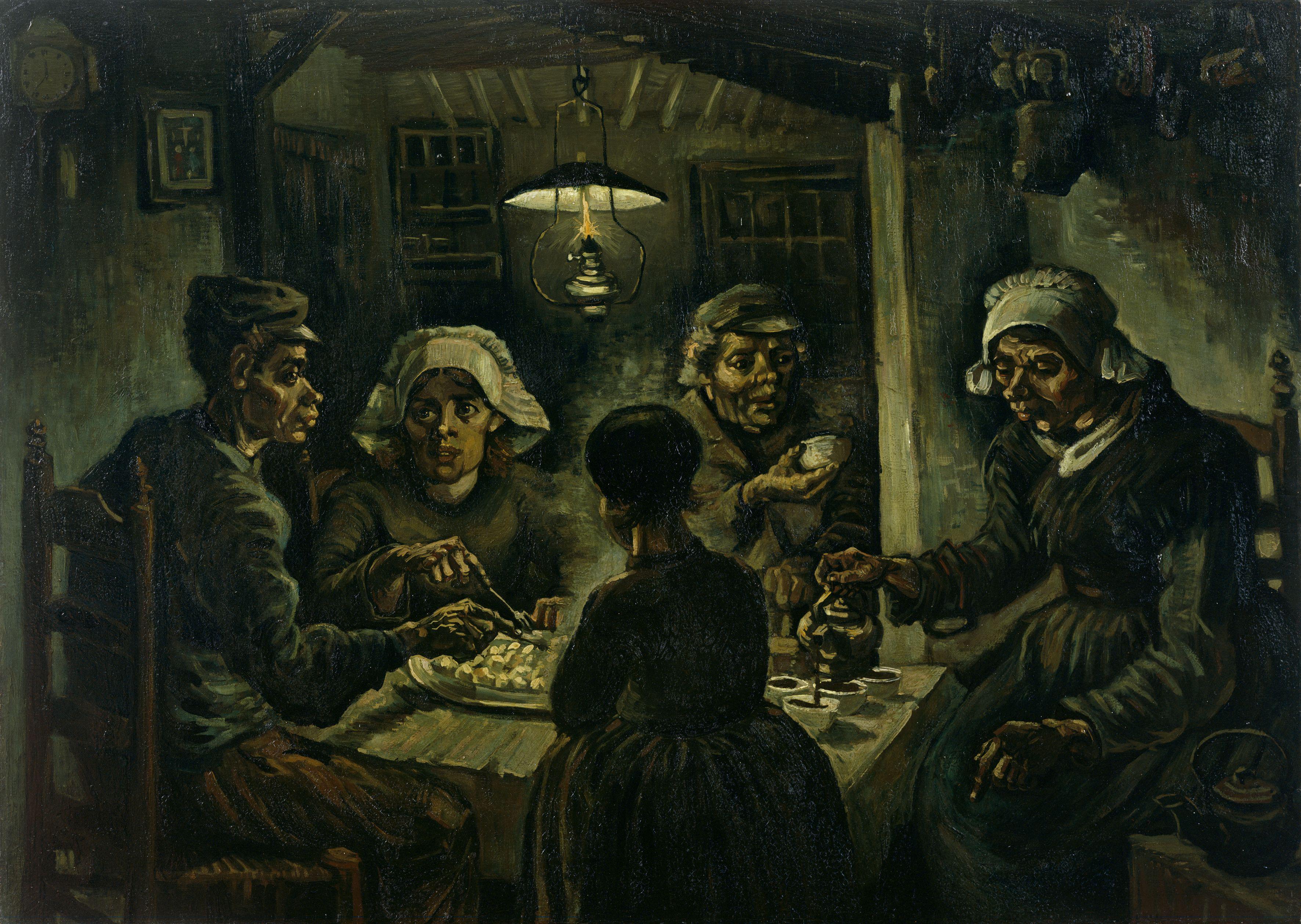 “The Potato Eaters” 1885
“The Potato Eaters” 1885
Van Gogh’s Artistic Influences
Traveling to Belgium he was influenced by the vibrant colors of Japanese art. He then moved to Paris and became friends with such artists as Gauguin…

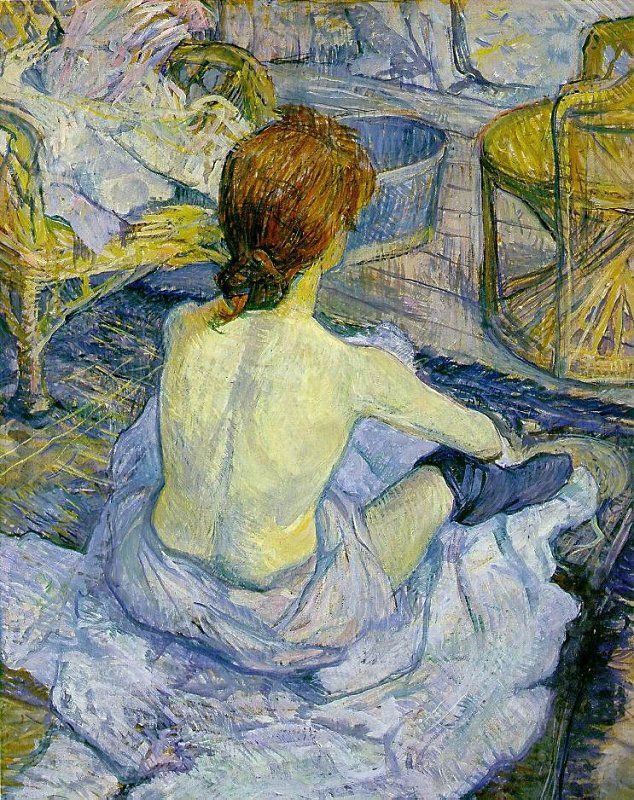
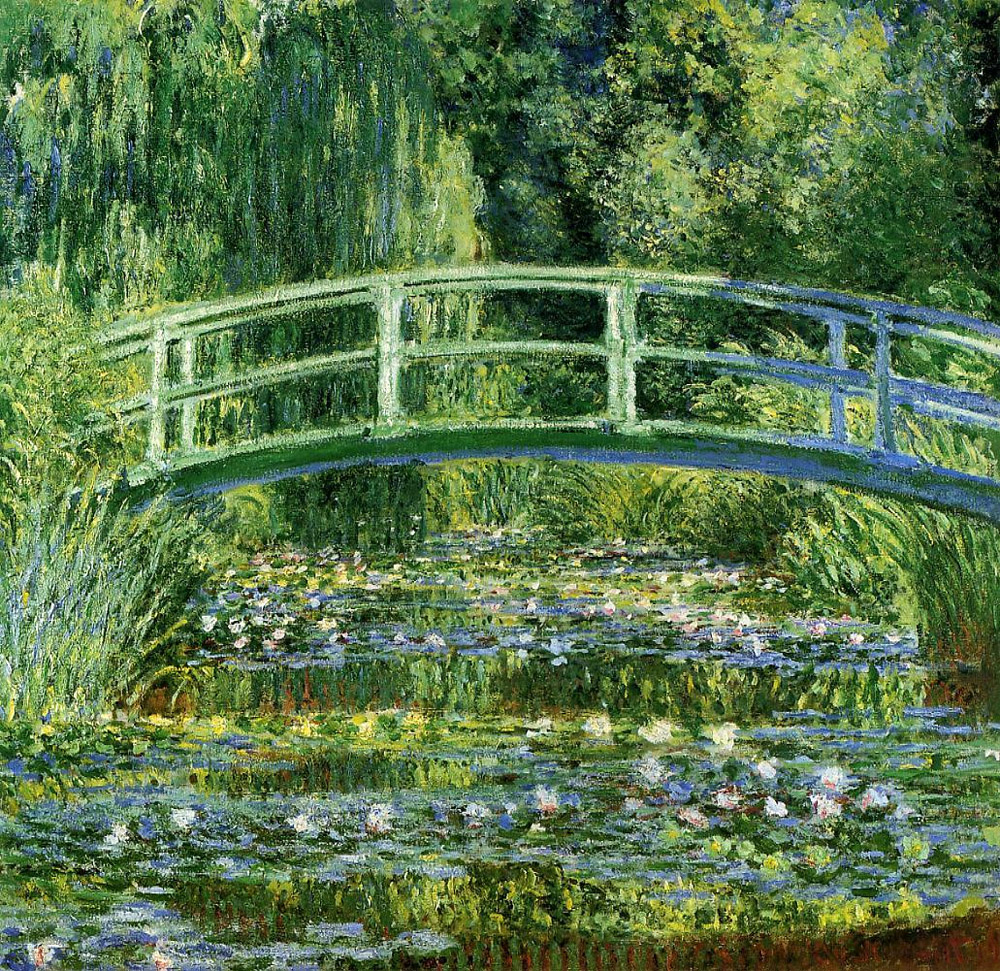
“Water Lilies and Japanese Bridge” 1899
As well as pointillism which is represented beautifully in this piece by Seurat.
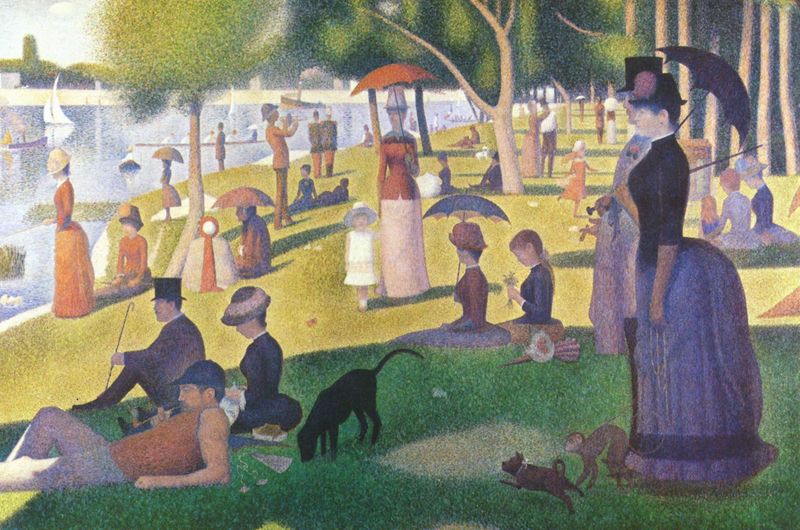
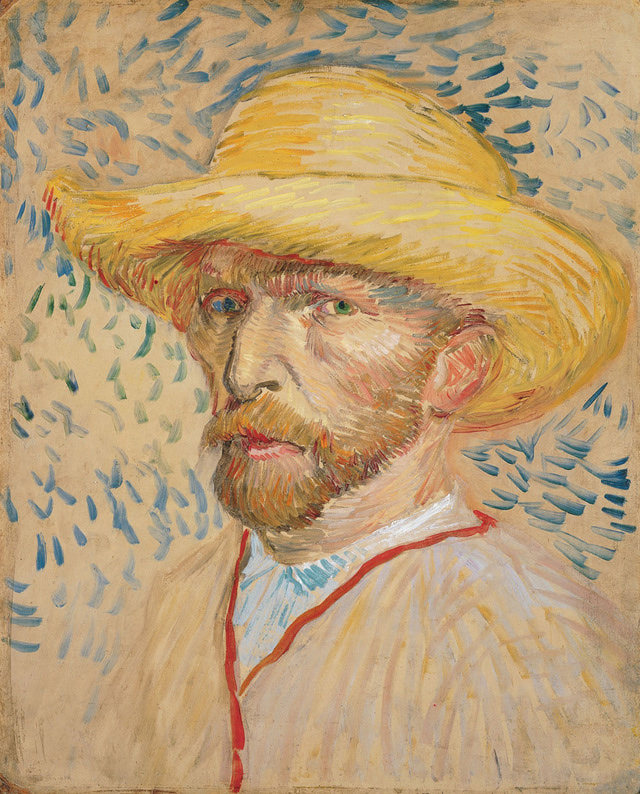
Van Gogh’s most replicated print is “Starry Night” which depicted his view from his room at the asylum in Saint-Rémy-de-Provence in 1889. You can find a coloring page HERE.

A Challenging Topic
I lightly covered Van Gogh’s mental illness and also spoke of his passing at the age of 37. To bypass any possible questions I asked one of my own. “How many paintings did Van Gogh sell while he was alive?” This, of course, changed their focus. The answer is one. We then talked about his painting “The Bedroom” and I asked if they had any of the same things in their rooms. (I find that children respond best when you provide ideas that they can relate to.) A coloring sheet is available HERE.
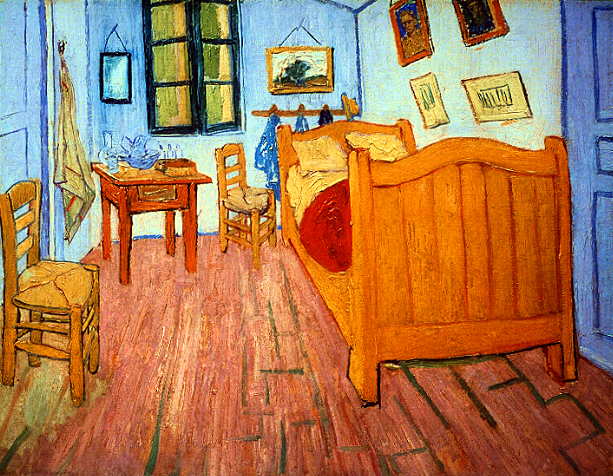
I closed by discussing that Van Gogh became very famous in the years after his death and one of the paintings from his Sunflower Series sold for over 70 million dollars in 1989. This, of course, impressed them terribly. We also talked about the fact that Van Gogh often changed his mark (signature) in his paintings and asked if they could find his mark in this Sunflower painting.
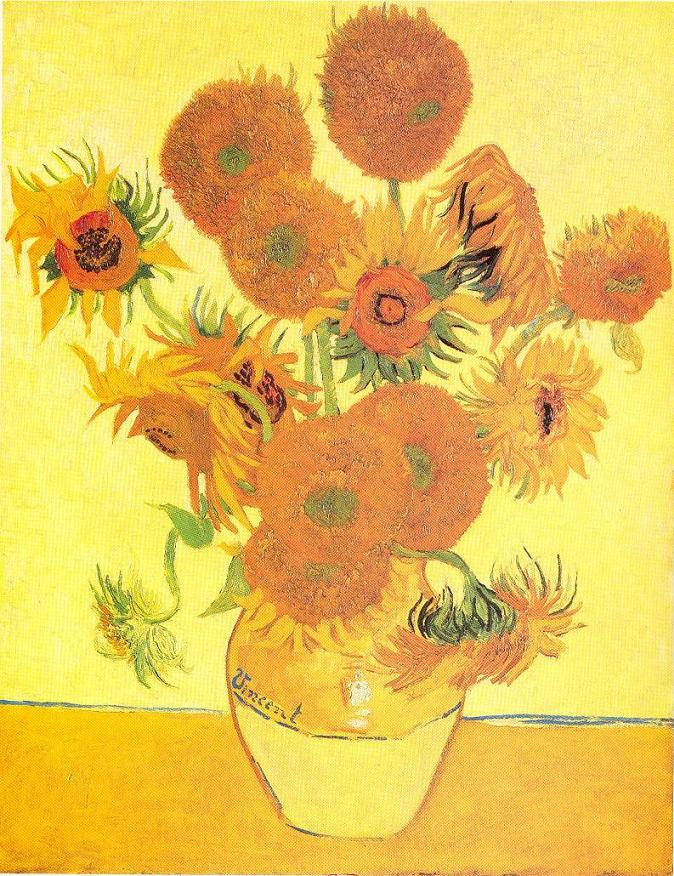
Create Your Own Masterpiece
I then passed out a sheet with an image of an empty frame and directed the students to create their own still life of flowers. I stressed that no painting would be the same because each student would have a different view (perspective) of the pot of sunflowers from where they were sitting. (This eliminated the need for a student to be just like everyone else.)
It is interesting to note that no two drawings were the same (which made me VERY happy), yet each and every student made their mark on their drawings.
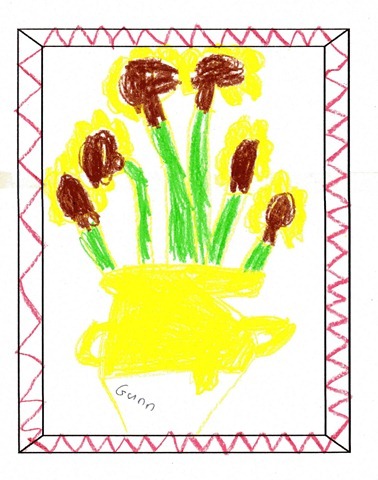 Spread the sunshine,
Spread the sunshine,Laura